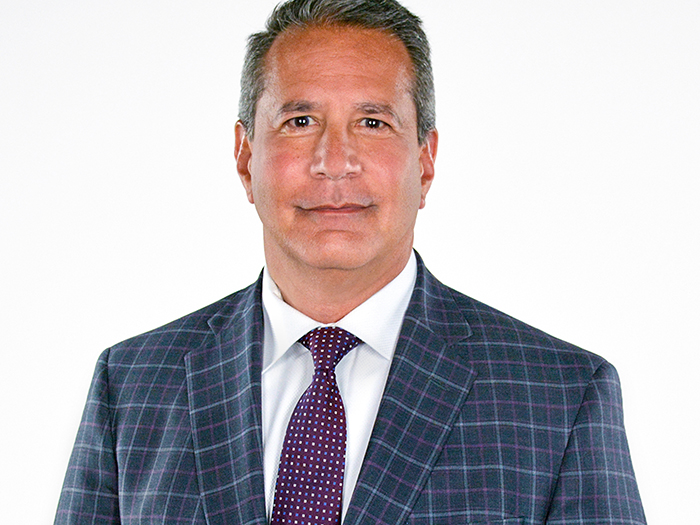Claims Management
Steering Toward an Alternative Claims Model

Companies that treat their injured workers as well as they treat their customers can expect improved customer service. That’s the advice of experts who endorse an advocacy-based claims model for their workers’ comp systems.

Denise Gillen-Algire, director of managed care and disability for corporate risk management, Albertsons Safeway
Such a model can be an alternative to the typical handling of a workers’ comp claim that’s driven by conflict and often leads injured workers to retain attorneys. Four workers’ comp thought leaders discussed why their organizations have embraced an inclusive model with a consistent approach that seeks the best outcomes for the injured worker, the challenges to creating such a model, and steps to get started.
“For Starbucks it all boils down to connection with our mission: to inspire and nurture the human spirit one person, one cup, one neighborhood at a time,” said Noreen Olson, manager of claims for the company. “If we’re not making our mission real for our partners, they are going to be less effective in creating that atmosphere for our customers.”
“Our employees are our greatest assets. We couldn’t deliver great customer service without great employees,” added Denise Gillen-Algire, director of managed care and disability for corporate risk management at Albertsons Safeway. “To deliver that, we first have to deliver great customer service to our employees.”
Olson and Gillen-Algire were among the panelists at an Out Front Ideas webinar sponsored by Sedgwick CMS and Safety National. The webinar was a follow-up to the recent conference of the Alliance of Women in Workers’ Compensation in Boston that addressed the subject of creating an advocacy-based claims model.
“It would be very difficult to focus on advocacy if we’re always looking to catch someone with the ‘gotcha’ mentality. We need to change that paradigm.” — Denise Gillen-Algire, director of managed care and disability for corporate risk management, Albertsons Safeway
The Alliance of Women in Workers’ Compensation is a think tank of “engaged female thought leaders committed to discussing challenges and emerging trends” in the industry, according to its website. Comprised of the merger of the Women in Workers’ Compensation and the Women Executives in Workers’ Compensation organizations, the group met in Boston in advance of the Workers Compensation Research Institute’s annual conference.
“Our experience has shown it definitely improves outcomes,” said Artemis Emslie, president of pharmacy benefit manager myMatrixx. “Like most companies we have a mission statement and set of core values. We know by taking that concept … it leads to better outcomes because there is more collaboration and trust.”
Attracting New Workers
The concept of an advocacy-based claims model might also be an answer to one of the biggest challenges facing the workers’ comp system: attracting new, younger talent.
“What [younger workers] want out of work is different than what other generations have wanted. Primarily, they want to have work that is meaningful, to work for a business where success is measured by more than just money,” said Kathy Tazic, managing director of national accounts for Sedgwick. “Eliminating some of the conflict out of the model and switching that to take care of people would be more attractive to millennials.”
The improved use of technology can also help attract millennials to the industry and also ties into the concept of an advocacy-based claims model. As Olson explained, many of Starbucks’ employees are new to the workforce and have different ways of receiving information.
“They don’t open paper mail and often don’t live at the same apartment for more than two months,” Olson said. “Look at how they are interacting with the world — mobile.”
Olson said delivering and receiving information from younger workers through mobile platforms is more effective. The company has made several changes to its claims handling model toward that end.
“At Starbucks we’re trying to do that by allowing partners to report injuries themselves through the phone or online,” Olson said. “Also, [we] make sure time-loss checks are direct deposited.”
Among the biggest differences between the way claims are traditionally handled and the Starbucks model is when claims are denied. Letting a worker know her claim does not meet the definition of a compensable workplace injury is done with empathy for the employee.
“In the advocacy-based model, we avoid saying ‘your claim was denied,’” Olson said. “Instead, we say ‘this incident is not eligible for workers’ comp but there are other benefits available to you as a partner of Starbucks to keep working.’”
Challenges and Solutions
The language used to convey information is one of the biggest challenges to an advocacy-based claims model. Changing the language in all communications involving injured workers can go a long way to eliminate much of the conflict from the system.
“In everything we read and see and in legislation, it’s all about adversary, it’s all about what’s bad in our system and how to protect us,” Emslie said, “Flipping that conversation and looking at the good indicators and what we should do from a benefit delivery model vs. what we have today.”
The current adversarial approach to injured workers points out another challenge to an advocacy-based claims model: overcoming fear.
“I think injured partners are fearful of claim denial, service providers are fearful of losing profitability for models they’ve constructed, and employers are fearful of losing talent,” Olson said. “Overcoming that fear and radically upsetting the status quo is the biggest challenge.”
Olson said the industry also needs to focus on technology. “We have all these outdated and ineffective cost containment processes or medical management processes that we had hopes to help,” she said. “We need to be more Disney like and develop a constant embrace of innovation.”
Getting back to the basics of the workers’ comp system is a crucial element of an advocacy-based claims model.
“We need to start by understanding we’re in the business of delivering benefits. This is a benefit delivery system and that we’re in the business of paying claims not denying claims,” Gillen-Algire said. “It would be very difficult to focus on advocacy if we’re always looking to catch someone with the ‘gotcha’ mentality. We need to change that paradigm.”










